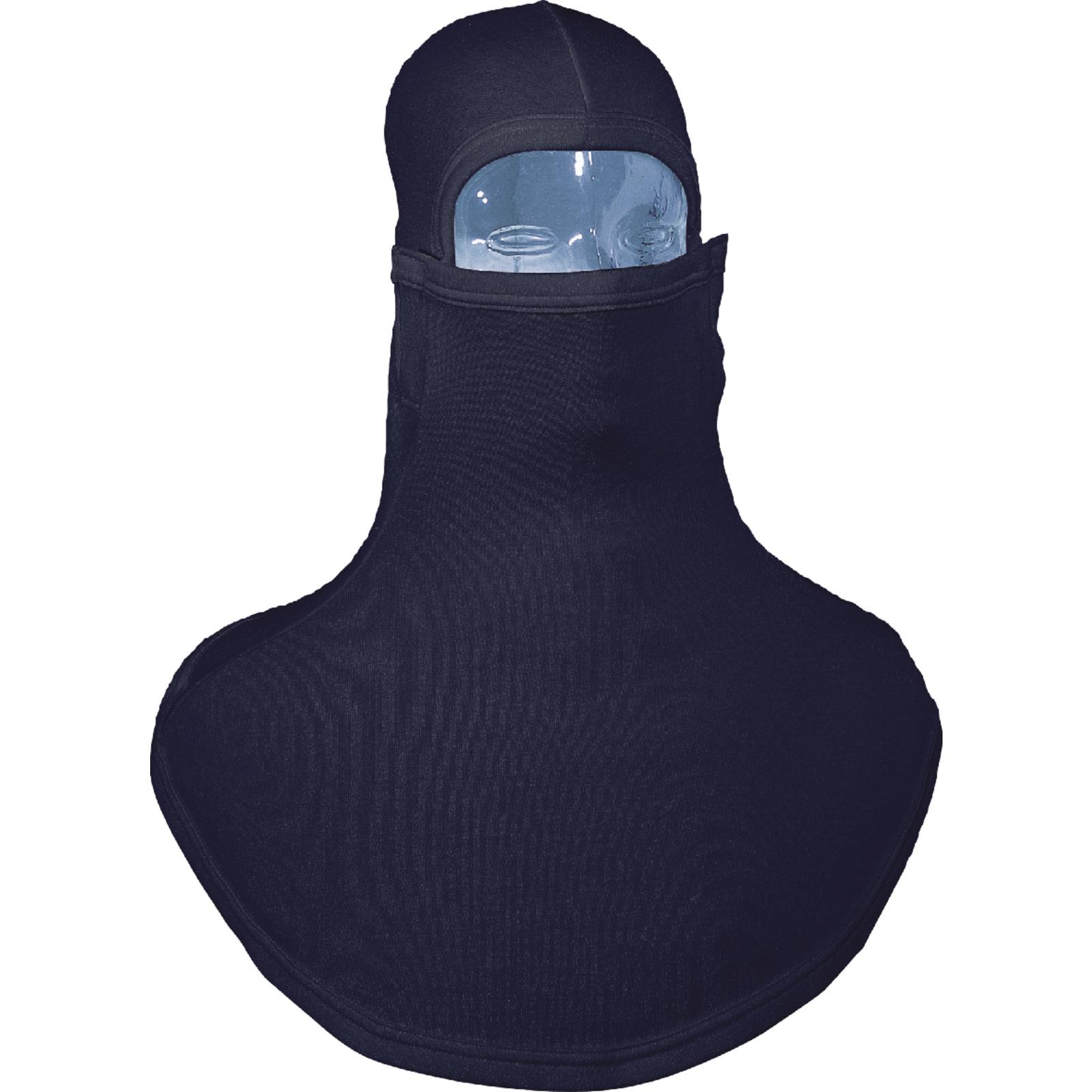The product complies with the European Directive 89/686, notably regarding ergonomics, innocuousness, comfort and with standards :
FLAME RETARDANT HOOD WITH FACE FLAP
Hood with face flap with velcro bands. Large flap covering shoulders.
50% Aramid knitwear 48% Viscose 2% Antistatic fibre 200 g/m².

Face flap
| Reference |
pcb |
Colour |
Size |
| CAFR2BM |
50 |
Navy blue |
One size |
EN340:2003 General requirements Reference standard, not for use alone, but only in association with another standard containing the protection performance requirements.
This standard specifies general performance requirements for ergonomics, innocuousness, size designation, durability, ageing, compatibility and marking of protective clothing and the information to be supplied by the manufacturer with the protective clothing.
EN ISO14116:2008 Protective clothing - Protection against heat and flamme - 3/ 12H / 60 Index of resistance of outside shell (from 1 to 3) Nb washes I (Industrial) or H (domestic) / T°C
EN1149-5:2008 Electrostatic properties - Part 5: Material performance and design requirements - Surface resistivity inferior or equal to 2.5x10⁹ Ohms on one surface at least following EN1149-1
- t50 <4s or S> 0.2 by method 2 ( charging by induction) of EN1149-3
This European Standard specifies requirements for materials and the design of protective electrostatic dissipation clothing used in conjunction with a grounded system in order to prevent incendiary discharges.
WARNING: These requirements may be insufficient in oxygen enriched flammable environments. This standard is not applicable for protection against mains voltages. The control of undesirable static electricity on the person is often necessary.
The electrostatic potential may, indeed, have serious consequences on the charged individual, because it can be high enough to cause dangerous sparks.
After a risk assessment, the wearing of protective electrical dissipation clothing may be necessary. The use of clothing certified according to EN1149-5 is then adapted.
The ATEX Directive 1999/92/EC, in its Annex II-A-2.
3, requests that workers be equipped with work clothes made of materials that do not produce electrostatic discharges that can ignite explosive environments.
The electrostatic potential can also affect equipment sensitive to electric discharge. And antistatic clothing are often used on electronic manufacturing sites, assembling semiconductors for example. Finally, they are used on sites with controlled atmospheres such as automotive paint workshops, to avoid the emission of particles that may be deposited on the body paint.
The antistatic charge dissipation can be provided by a process limiting the build up of charge, or by adding carbon or metal wires. People wearing protective electrostatic charge dissipation clothing must always be grounded with a resistance of less than 10⁸Ω, for example, by wearing appropriate footwear such as the safety shoes stated in EN ISO 20345, or by other suitable means.


